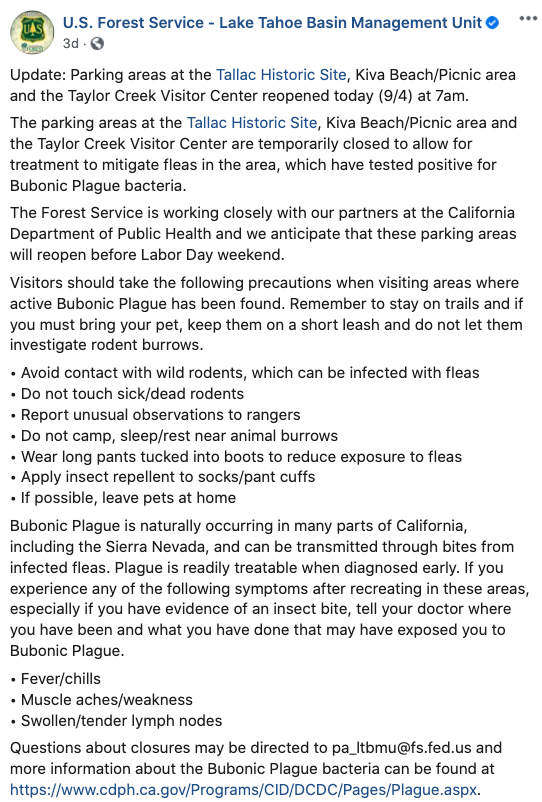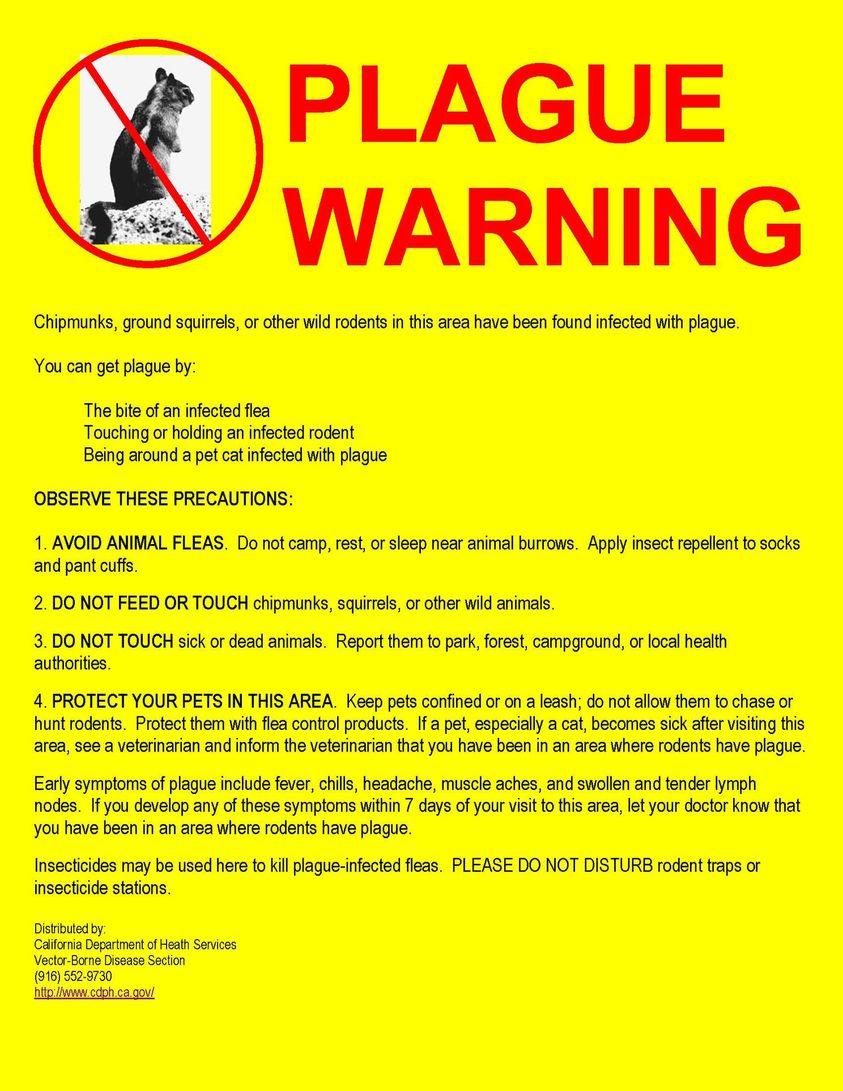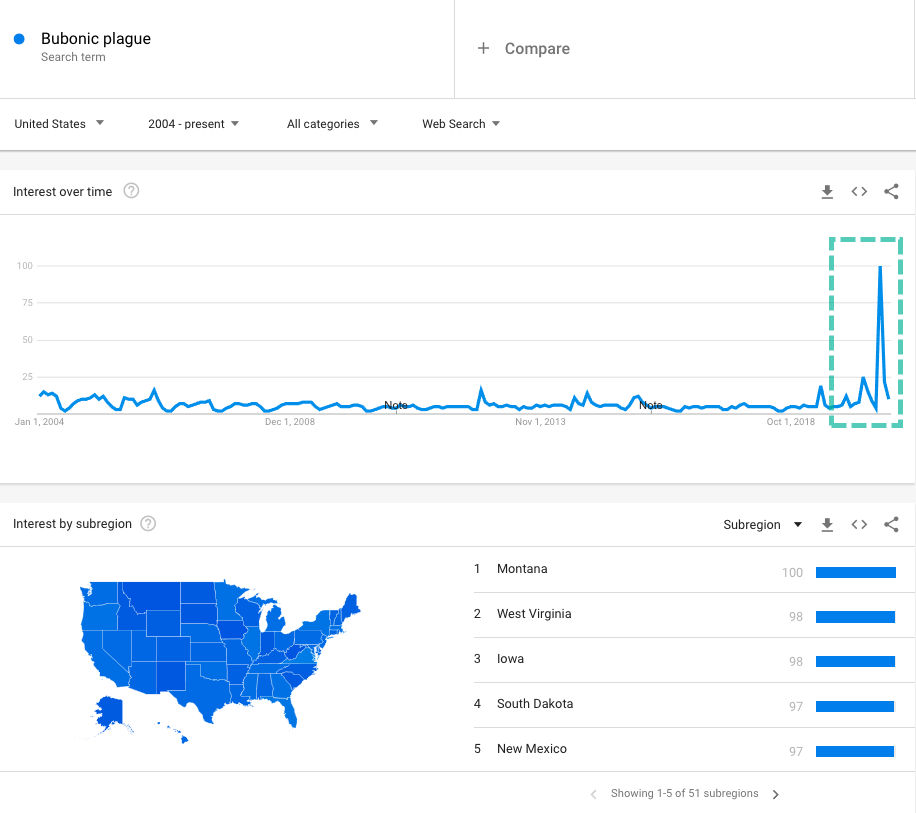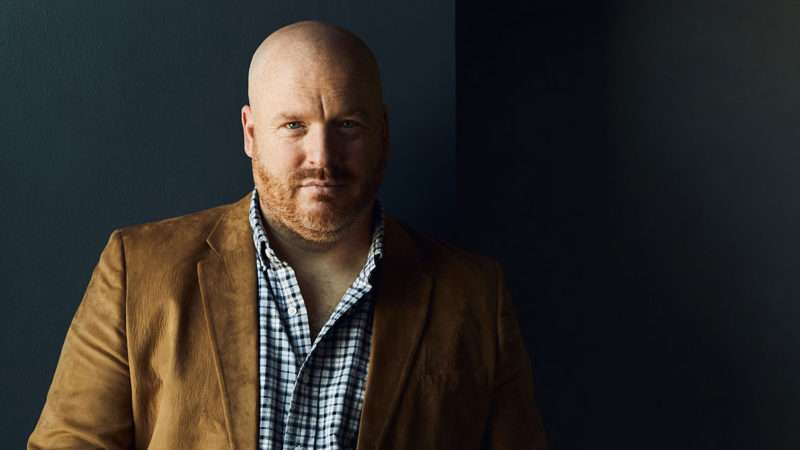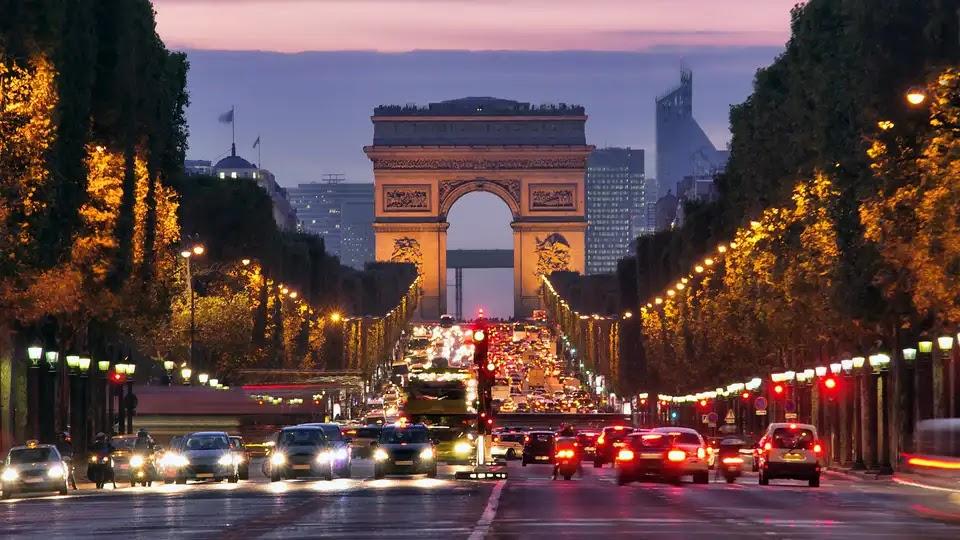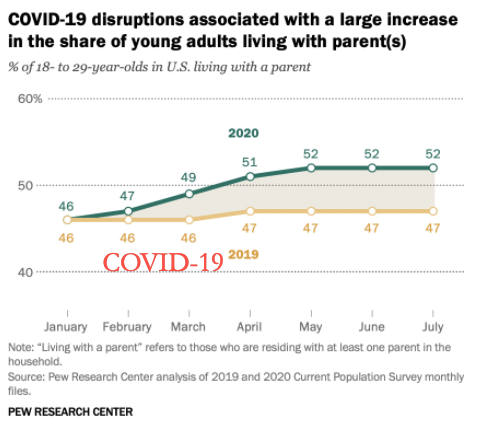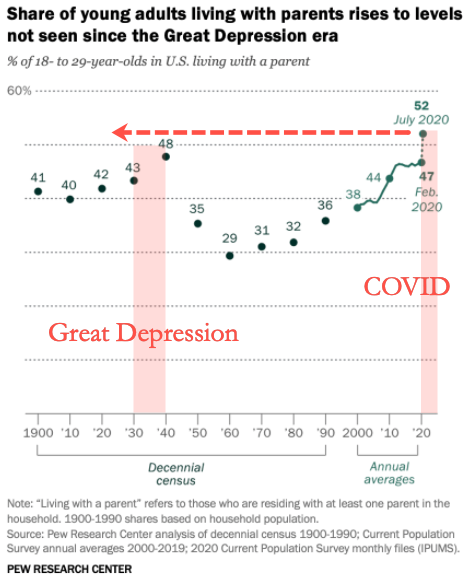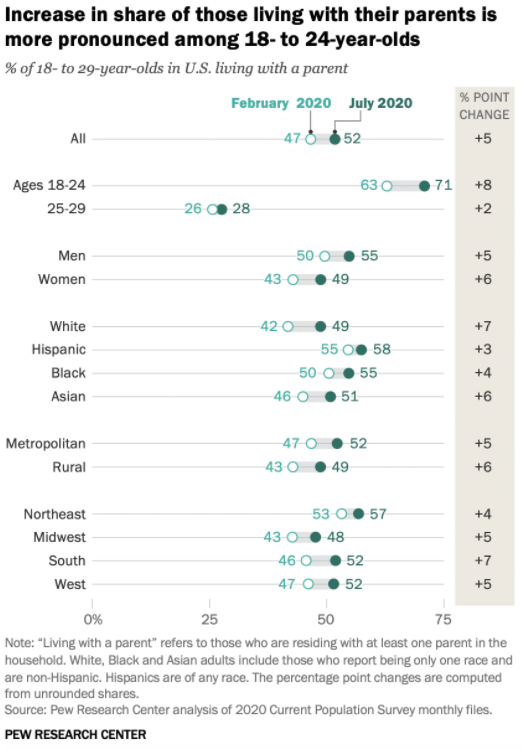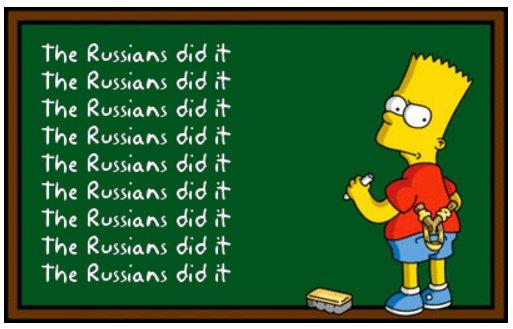In this month’s issue, we draw on decades of Reason journalism about policing and criminal justice to make practical suggestions about how to use the momentum of this summer’s tumultuous protests productively. Check out Damon Root on abolishing qualified immunity, Peter Suderman on busting the police unions, Jacob Sullum on ending the war on drugs, Sally Satel on rethinking crisis response, Zuri Davis on restricting asset forfeiture, C.J. Ciaramella on regulating use of force, Alec Ward on releasing body cam footage, Jonathan Blanks on stopping overpolicing, and Stephen Davies on defunding the police.
On May 25, George Floyd, an unarmed black man, died at the hands of Minneapolis police. Six years ago, after cops killed Michael Brown in Ferguson, Missouri, just 43 percent of Americans believed that such incidents indicate a systemic problem. Though police killings have remained level since 2014, 69 percent of Americans now agree that “the killing of Floyd represents a broader problem within law enforcement.”
Radley Balko is a Washington Post opinion columnist and former Reason reporter who covers police abuse, the drug war, and criminal justice reform. His Reason coverage of Cory Maye—a black man who was put on Mississippi’s death row for supposedly killing a police officer during a no-knock raid in 2001—helped bring about Maye’s acquittal. His 2013 book Rise of the Warrior Cop (PublicAffairs) was ahead of its time in documenting the dramatic increase in the militarization of local law enforcement and the dangerous incentives and confrontations that creates between police and citizens.
His latest book—The Cadaver King and the Country Dentist (PublicAffairs), co-authored with Tucker Carrington—documents widespread problems with law enforcement, forensic evidence, expert testimony, and media coverage of crime. In June, Nick Gillespie spoke with Balko about how to dial back the militarized police tactics that have become commonplace and whether lasting reform might be possible.
Reason: You’ve been covering the intersecting topics of the war on drugs, police abuse, and race issues in America for going on 20 years now. Why did the George Floyd killing explode into public consciousness the way it did?
I think [it’s] the power of video. If you go back to the civil rights movement, obviously there were abuses going on for a long time in our country’s history. The organizers of the civil rights movement in the 1960s really recognized the power of images. They knew there was going to be violence; they knew that the other side was going to be provoked and that was a strategy to win over the middle and white America.
The George Floyd video is indisputable. There have been attacks on Floyd’s character, his decisions in life. But there is no excuse for having your knee on a guy’s neck for nine minutes.
In the trials of the Los Angeles Police Department (LAPD) cops accused of beating Rodney King, the defense broke the video down, claiming it showed that actually they weren’t beating him, and some people thought “Oh, maybe what LAPD was doing was OK.” With Floyd, nobody is defending the police action. Is that a sign of progress?
I think it is. There’s been a widespread embrace of the idea that police are systematically abusive. The idea of racism in policing in America has crept into white America, into the suburbs. Four years ago, the Democratic nominee for president couldn’t say the phrase black lives matter without qualifying it. A lot of people were like that. Now you have [GOP Sen.] Mitt Romney saying it unsolicited. You have people [who] probably haven’t protested ever in their lives joining this protest.
Like Michael Brown in Ferguson, like Tamir Rice, a lot of these incidents that have sparked uprisings, none of them are really about those cases in isolation. There have been unjustified police killings of white and black people in cities all over the country over the last 20 years; where we see the uprisings tend to be in places that those stories speak to people on a very personal level. They tap into some long-simmering tension, resentment, pain, fear, despair.
I think with Michael Brown—and, as you say, Rodney King—the fact that the initial narrative had some qualifications or context that made it less compelling gave white people an excuse to dismiss it all as based on a false narrative, and actually ignore the broader long-simmering anger and despair that led to protests in the first place. In this case, there’s no contextualizing that video. So it’s easier to say, “All right, I’m fully on board with this.”
Critics of Black Lives Matter say police abuse is an issue with individual cops, not systemic racism. They’ll note in 1971, officers with the New York Police Department killed 93 people. In 2016, they killed nine. They’ll say that this is bad, but it is not a big-scale problem.
I think there are two different questions: How systemic is police abuse? And how systemic is racism?
There are lots of things that drive how many times police shoot people over the course of a year, including general crime rates, consensus about how people’s lives are, police attitudes, how many police officers are on the force, how well-equipped they are, how well-trained they are. There was a lot more violence, period, in the ’70s and ’80s, up to the early ’90s. My measure of whether a system is corrupt is whether you can point to specific incidents where a bad apple…has clearly acted corruptly and violated some of these constitutional rights and nothing is done about it.
You can say that bad cops are a tiny percentage of the overall force, but if the system isn’t doing anything about those bad cops—or even when it does, they can find a job a county or two over—then it’s probably a corrupt system. Yes, it’s probably a small percentage of cops who kill people or shoot people or are blatantly racist. But there is an entire culture of covering up, of the idea that cops should always look out for each other—the best interests of cops are prioritized over everything, over justice, over the people they’re supposed to be serving.
If you have a system where even the obviously corrupt people are very rarely held accountable, then I think you can say unequivocally that that system itself is corrupt.
Can you talk about systemic racism? How does it influence policing?
There are a lot of misconceptions about what systemic racism is. For a long time I didn’t fully understand what it was. Systemic racism is not the idea that everybody is racist on an individual level. It’s that the system itself was constructed, built, honed, at a time when racism was written into our laws. It was a day-to-day fact of life. The criminal justice systems that we built during Reconstruction, which hasn’t really subsequently changed since the end of Jim Crow…I don’t think it should be particularly controversial to think that those systems that had a purpose at that time probably haven’t shed all of the aspects of deliberately wanting racially based outcomes. They’re not just going to shed that stuff overnight—it has to be purged from them.
After Ferguson, I went to St. Louis County in Missouri, [which] has over 90 municipalities—an obscene number of cities and towns. During the great white flight to the suburbs from St. Louis, white people would move into a suburb and eventually upper-class/middle-class black people would also move out [to the suburb]. White people didn’t like that, so they’d move a mile over and start a new town. This just kept happening all over St. Louis County, and you got postage stamp towns all over the county. Almost all of them have a town council and a police department.
The towns are basically funded [by] a sales tax. If you’re a poor town, which tends to be the blacker towns, you’re going to get much less revenue from sales taxes, and so they supplement that [with]—or in some cases, their primary sources of revenue are—fines and fees that they extract from their residents. The really pernicious part of this is that the blacker the town, the poorer the town; the blacker the town, the more reliant they are on these fines and fees.
In all these towns, the police don’t actually solve crimes. The county police do that. Their sole purpose is to extract revenue from their residents in order to pay their own salaries.
Nobody’s going to argue that black cops that are harassing people in [primarily] black towns are racist. You also can’t argue that that isn’t a racist system built on a racist legacy.
I also think that the whole idea of racism—systemic racism, racial profiling, racism in the criminal justice system—the counter of that is always that you have to look at black crime rates, black-on-black crime.
Over Memorial Day weekend in Chicago, 18 people were killed on May 31—almost all of them victims of black-on-black crime. But we don’t hear about that. Some people say that’s evidence the conversation is focused in the wrong place.
That’s the argument. You look at, for example, stop and frisk in New York City, which is often justified [by saying], “Look at all the black lives stop and frisk saved because it took guns out of the hands of criminals,” right? Something like 95 percent of the people who were stopped and frisked, police didn’t find anything. If that’s the argument, what you’re saying is those 95 percent of people who were stopped and frisked who are innocent—that’s fine. That’s the opposite of individualism, right? We’re treating people based on the actions of other people who look like them.
If the argument is that black people commit more crimes, therefore more black people are in prison, that’s at least something we can look at the data on. But the idea that racial profiling and stopping and searching innocent people on the side of the road is OK because those people are a member of a group that tends to, I don’t know, be more likely to engage in drug trafficking—you’re justifying punishing people based on the fact that they’re a member of a racial group.
You have written about the Breonna Taylor case, which is a horrifying encapsulation of the way the drug war culminates in terrorizing innocent citizens, through no-knock raids that turn deadly, police militarization, and the like. Do you think that case is driving enough of the conversation for police reform?
I’d like to see it driving more, because I think the use of those tactics is far too common. It used to be that this kind of tactic was only used if you were confronting somebody who was in the process of committing a violent crime, where somebody’s life was in immediate risk. What we see in the ’80s and ’90s is forced-entry raids increasingly—and then dominantly—used to serve drug warrants.
It was a really dramatic shift in the use of that kind of violence, government violence. Before you were using it against somebody who was in the process of committing a violent crime, an active shooter or bank robber or hostage situation. Now, that kind of force is primarily being used against people who are merely suspected of committing nonviolent, consensual crimes.
Most of these raids are not arrest warrants, they’re search warrants. They’re still in the investigative process. A lot of times it’s based on dirty information. The tactics themselves are extremely volatile and violent. They leave very little margin for error. As we see with Taylor, people have died because of it.
A year and a half ago, I looked through about 100 no-knock search warrants that were served in Little Rock, Arkansas. About 95 percent of them were illegal, in direct defiance of a Supreme Court ruling, Richards v. Wisconsin. What the court held was that in order to get a no-knock warrant, the police have to show specific information that the person they’re going to search is a threat to either attack the police, dispose of evidence, or flee if the cops take the time to knock and announce first.
Every single warrant [I looked at] had this boilerplate language, almost word for word in most of them, that said that all drug dealers are a threat to attack police, dispose of evidence, or flee if the police knock and announce. The Supreme Court has explicitly said that that’s illegal. The remarkable thing is the judges [who] were signing off on these warrants were completely oblivious to the fact that they were signing illegal warrants.
In Little Rock, they were using explosives to blow doors off the hinges. If somebody’s on the other side of that door, they’re lucky to be alive.
Is it that they don’t read the warrants, or they do and they just ignore the Supreme Court ruling?
A few years later in Hudson v. Michigan, the Court ruled that yes, the knock-and-announce rule is inherent in the Fourth Amendment—it’s part of a “castle doctrine,” which is a centuries-old law that goes back into common law—but we’re not going to apply the exclusionary rule when the police violate it. Basically, there was no mechanism to actually enforce this requirement. A lot of us predicted this was going to be terrible, because there’s nothing stopping police from violating [it]. It’s not a rule at all if there’s no way to enforce it.
That’s what we saw in Little Rock. And in the Taylor case, there were five warrants for that particular drug investigation where the detective requested a no-knock. It was the word-for-word exact same language about drug dealers being violent or a threat to dispose of evidence. In Taylor’s case it was particularly pernicious, because her involvement was that she had dated the guy who [had been] under investigation several years earlier—they had broken up years ago—but she had let him use her address to receive some packages in the mail.
Now, if they had actually followed the Supreme Court’s guidance, the judge would have required [more investigation] before granting a no-knock [warrant]. They, and the judge, would have learned that her connection to all this was tenuous and that this kind of violence wasn’t necessary against her.
The packages that the ex-boyfriend received at her house were clothing and shoes. There weren’t even any drugs in the packages. Her only crime was to let a former paramour use her address to receive some clothing in the mail. For that, they kicked down her door in the middle of the night. Her then-boyfriend reached for a gun, which he legally owned. If they’d done some research, they would have known that he stayed there and that he was a licensed gun owner, and they would probably have drawn the conclusion that drug dealers tend not to license their weapons with the government.
Are there theories of policing that are gaining ground that are more consistent with the idea of people being able to pursue life, liberty, and the pursuit of happiness?
One reform libertarians should be paying a lot of attention to is from a group called Cure Violence that operates in several large cities, but primarily in Chicago. This is an intervention group, so they operate in high-crime areas, and when there’s an incident—a homicide or some sort of gang activity, for example—they go in. They have authority, respect, and credibility in the communities where they operate. A lot of times they hire people who used to be in those communities. They’ll hire former gang members.
The idea is that they go in and intervene. They try to prevent the violence from spreading, and they try to prevent it before it happens. There’s pretty compelling data in Chicago showing that in the neighborhoods where they operated, they had a very substantial effect on reducing the homicide rate. In fact, when the homicide rate spiked in Chicago several years ago, it coincided with the city cutting the funding to Cure Violence. If you look at neighborhood-specific data, it’s pretty overwhelming that this group was doing a very good job.
Would that work as a replacement for police? I don’t know. Probably not, but the idea that maybe we could redirect a not-insubstantial amount of money that we give to armed officers of the government patrolling these neighborhoods to unarmed people who try to resolve things not with coercion but with negotiation, talking, and mediation is something worth looking at.
Policing has been with us for so long that it’s hard to even imagine a country without any sort of armed police at all. But I do think we can think creatively about these things.
Any other reforms that you think are particularly worth focusing on?
One that [the George Mason University economist] Alex Tabarrok wrote about [recently] is that there’s no reason why our traffic laws have to be enforced by armed government agents.
A police officer pulls you over and gives you a ticket, which then you take home and decide whether you’re going to pay, and you send it in via mail. Why can’t you have some sort of civilian traffic corps who, instead of pulling you over, sees you speeding, writes down your license plate, calls it in, and you get a ticket in the mail? The end result is still the same. You get a ticket in the mail that you can pay, or choose not to pay and face the consequences of that. The difference is you’re not having this armed interaction [or] confrontation with a police officer, which is completely unnecessary.
Our traffic laws need to be about road safety, not generating revenue. There are lots of studies done in Europe about [using] roundabouts instead of stop signs. There have been some really interesting studies about speed limits and how arbitrary they are. Our roads are actually built imagining people driving much faster than speed limits allow, which means cities and towns can place speed limits arbitrarily in a way that maximizes revenue to the city….I mean, there are small towns that 40 or 50 percent of their budgets are reliant on traffic revenue.
That idea of driving through small towns and getting a ticket is so deeply embedded in our culture, it’s almost impossible to think about a world where you wouldn’t be worried about that.
Right. Nobody’s saying there should be anarchy on the highways, but we could have speed limits that are more organic, calculated based on how people actually drive. There’s a study showing the safest speed limit is the one that’s what the 90th percentile of people drive at. Right now [the real speed limits are] far lower than that. That just creates unnecessary interactions.
Think about all the police abuse cases that originated with a traffic stop, and then escalate it from there. Think about all the animus and anger in motorized communities that come from the regular harassment they face from traffic stops. You take those out of the picture and it could go a long way toward rehabilitating the image of the police.
Part of the large issue of reform is really minimizing contacts between the police and citizens.
There’s an inherent power imbalance when you’re pulled over, and this guy has got six different weapons on his belt, and he’s hovering over you while you’re sitting in your car looking up at him. If you’re part of the community where this happens to you however many times a month—five, six, seven, 10 in some areas—it’s easy for somebody who looks like me to say, “You should be respectful to cops and polite to them.” If they’re harassing you and screwing with you several times a month, eventually you’re going to lose your patience. I think we expect people to be perfect in those situations. There are polls showing that black people are more fearful of being a victim of a police beating or shooting than they are of being victimized by a criminal.
Are you optimistic about police reform? How will we know when we get there?
I am more optimistic than I’ve been in a long time. If you look at polling, it’s remarkable—support for the protesters jumped 20 points in two weeks.
So much policing is done at the local and state level that there isn’t a federal switch we can just flip to say, “OK cops, you can’t do this anymore.”
The best thing we can do at the federal level is to remove the perverse incentives that are driving bad behavior at the local level. Most of the reform is going to happen at the local level.
In the aftermath of the Floyd killing, the Minneapolis City Council is effectively abolishing the police department as it exists now and replacing it with a different set of operations.
Right, and it’s not clear what it’s going to look like, but I think it is a good thing. We want to see cities trying different ways of walking that line between public safety and individual rights. The more they try different formulas, the more likely we are to find one that’s going to hit on the right equation.
This interview has been condensed and edited for style and clarity. For an audio version, subscribe to The Reason Interview With Nick Gillespie.
from Latest – Reason.com https://ift.tt/3m06GNZ
via IFTTT
